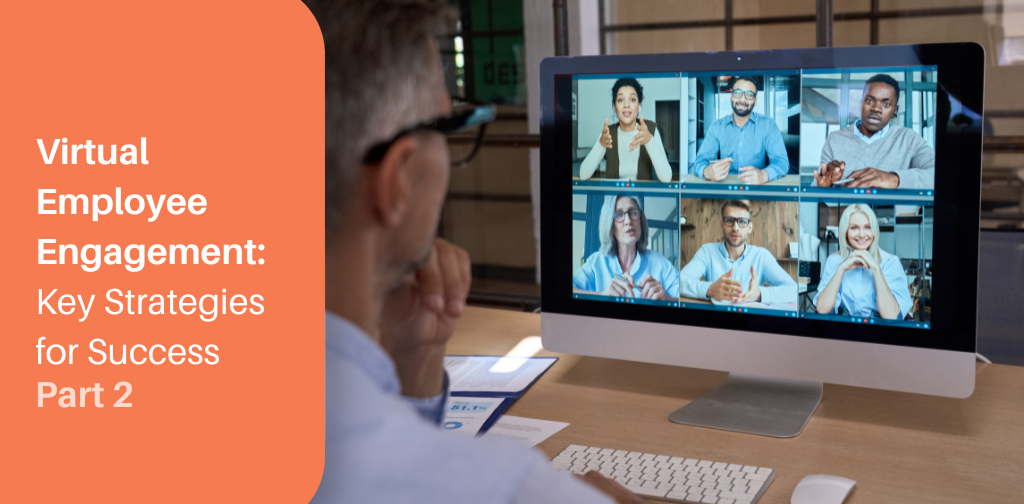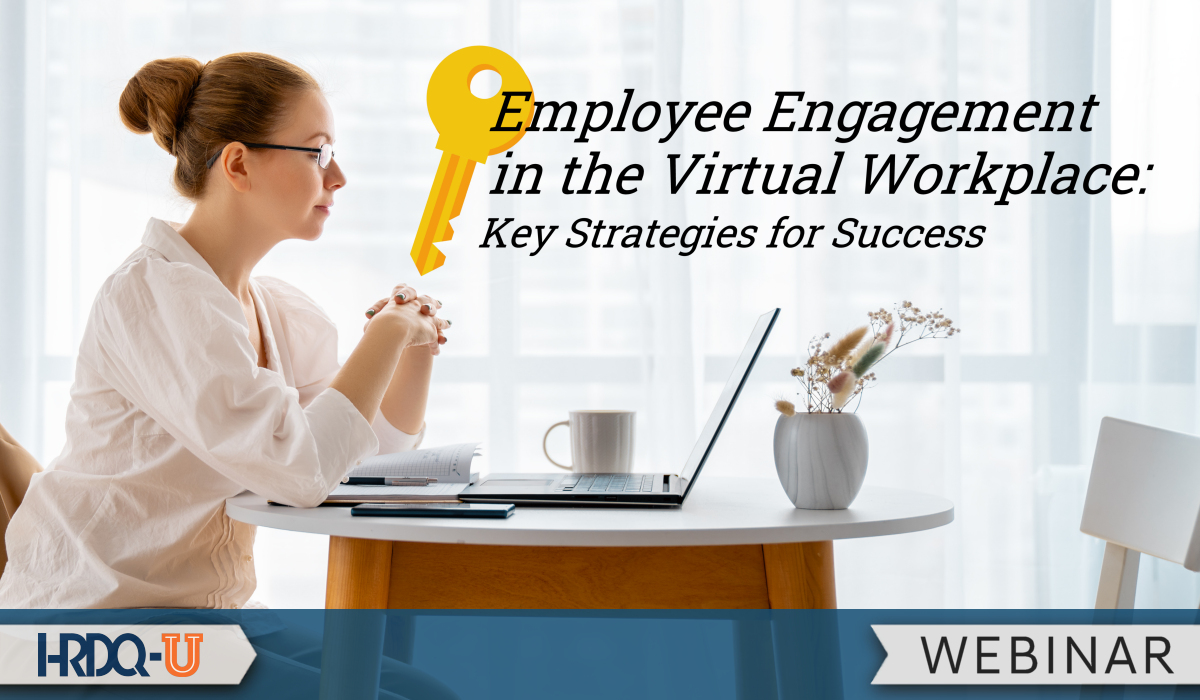Making Work Engaging
Several decades ago, a popular commercial for Dunkin’ Donuts featured a mustached man waking up before dawn. He was intoning the familiar catchphrase, “Time to make the donuts” as he shuffled off bleary-eyed to get dressed. While a lack of work variation may be good for donut baking, it’s not ideal for driving engagement. Indeed, routine work that rarely changes can feel rote very quickly, leading to a decrease in enthusiasm and effort. Feelings of isolation and disconnection associated with virtual work only compound the problem. That’s why making work engaging is a key to fostering employee engagement in a virtual workplace.
Many of you are no doubt familiar with the concepts of extrinsic and intrinsic motivation. In a nutshell, extrinsic motivation is derived from factors outside the person, e.g., promotions, bonuses, pay increases, etc.
Intrinsic motivation, on the other hand, is generated through interest in and enjoyment of the work itself.
Intrinsic motivators include a sense of purpose and meaning in the work, passion for the work, and opportunities for creativity and self-expression provided by the work. Managers have long known about the power of intrinsic and extrinsic motivation in conventional workplaces; given the unique challenges of virtual work, I would argue that leveraging intrinsic motivators is especially critical.
Virtual Employee Engagement: Autonomy, Mastery, and Purpose
In his popular book Drive: The Surprising Truth About What Motivates Us, author Dan Pink focuses on three important intrinsic motivators: autonomy, mastery, and purpose.
- Autonomy: “When I have the freedom to determine how I achieve my goals.”
- Mastery: “When I have the opportunity to learn new things at work and am given interesting things to do.”
- Purpose: “When I understand how and why my work matters.”
After first establishing high levels of trust and psychological safety (see Blog #1), managers in virtual workplaces should consider how to “bake” these three factors into their culture.
Here are a few virtual employee engagement ideas:
Autonomy
- Create opportunities for people to work when, where, and how they want.
- Facilitate working arrangements with your team(s) that clarify expectations.
- As a manager, you have the autonomy to create a work experience that works for everyone.
Mastery
Make time and space each week for so-called “adaptive work,” i.e., experimentation, problem-solving, and creativity. Ask questions of your team, such as:
- What aspect(s) of our work can we improve, enhance or strengthen?
- What impact did our team have last week, and what did we learn?
- How could we better anticipate the needs of our customers/clients?
Working on the answers to these questions taps into our natural sense of curiosity and spurs innovation. Most importantly, adaptive work breaks up the monotony of routine work that may be amplified in the virtual workplace.
Purpose
To facilitate a purpose in your workplace
- Ensure the people on your team know exactly how their work is adding value and contributing meaningfully to your organization’s mission.
- Gather and showcase input from team members and share learnings, insights, and “wins” regularly.
The Progress Principle
In their book The Progress Principle: Using Small Wins to Ignite Joy, Engagement, and Creativity at Work, Drs. Teresa Amabile and Steven Kramer share the results of their rigorous analysis of nearly 12,000 diary entries provided by hundreds of employees. The first part of the book focuses on what the authors call inner work life, the dynamic, fluid interplay among a person’s perceptions, emotions, and motivation during the workday. Amabile and Kramer’s research showed that of all the positive events that influence inner work life, the single most powerful is making progress in meaningful work. They call this finding the progress principle.
Unfortunately, most managers seem unaware of the power of progress to boost workers’ engagement (and equally unaware of setbacks to diminish engagement).
In fact, in a survey of managers conducted shortly after the discovery of the progress principle, Amabile and Kramer were surprised to find that “support for making progress” ranked last as a motivator. Clearly, employees and managers are not on the same page when it comes to workplace motivation.
Stay Alert and Recognize Small Wins
Given all the barriers to optimal performance in a hybrid workplace, managers must ensure that consistent forward movement on meaningful work is a regular occurrence in their employees’ work lives. Similarly, managers should stay alert for setbacks that can send engagement spiraling downward. Setbacks to look out for include hitting dead ends, obstacles/roadblocks, failing to acquire crucial information, constant changes, bureaucracy/unresponsiveness, and inflexibility. While occasional setbacks at work are to be expected, a steady diet of them can turn an otherwise healthy work environment toxic.
One of the easiest ways to utilize the progress principle is to look for and acknowledge small wins. Interestingly, small wins and modest forward movement on projects, tasks, etc., provide the same positive psychological lift to employees as much greater breakthroughs.
Recognizing small wins does not require exorbitant investments of time or money; rather, simply showing appreciation for an employee’s (or team’s) persistence or tenacity will suffice.
Reflecting on These Virtual Employee Engagement Ideas
While virtual and hybrid workplaces certainly have their advantages, one should not look past the many challenges they bring. The potential for the disintegration of engagement in this type of work arrangement is no joke; feelings of isolation, disconnection, and detachment can easily lead to burnout, frustration, and ennui. Whether you are in a formal position of authority or not, I encourage you to reflect on the role the preceding ideas might play in your virtual/hybrid workplace. As with everything in life, the better prepared you are, the better your outcomes will be.













